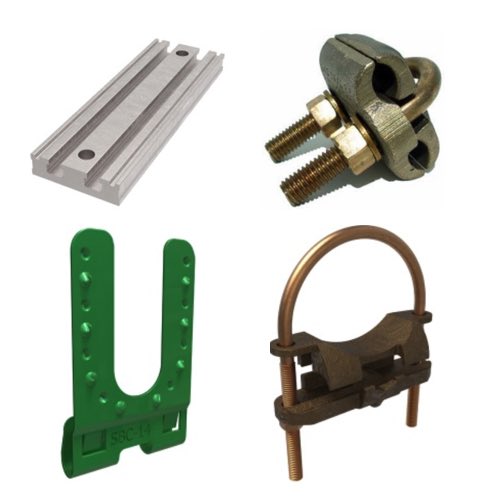Bonding & Grounding

RSP Supply carries a full line of bonding and grounding products from trusted brands like Ilsco, Appleton, and Panduit. Proper bonding and grounding are essential for ensuring electrical safety, preventing electric shock, and maintaining stable operation in industrial and commercial systems.
Bonding connects all conductive metal parts that may come into contact with electrical power or equipment, equalizing voltage potential and reducing the risk of electrical shock. Grounding provides a safe path for fault current to return to the earth, preventing damage to systems and protecting personnel. Together, these two safety practices form the foundation of a reliable and secure electrical installation.
In industrial and commercial environments, proper bonding and grounding not only improve safety but also enhance performance by ensuring stable voltage and current flow. Components like grounding clamps, bonding jumpers, lugs, busbars, and grounding conductors are critical to meeting electrical codes and maintaining compliance with the National Electrical Code (NEC).
FAQs
Q: Why are bonding and grounding essential for electrical systems?
Bonding and grounding are vital for safety and performance. They prevent electric shock, reduce equipment damage, and ensure stable voltage throughout the electrical system.
Q: What materials are typically used for grounding conductors?
Copper is commonly used due to its high conductivity, corrosion resistance, and reliability in preventing ground faults and static electricity buildup.
Q: How does bonding differ from grounding?
Bonding connects conductive components to equalize voltage, while grounding connects the system to the earth to provide a safe discharge path for fault current.
Q: Are bonding and grounding required by electrical codes?
Yes, the National Electrical Code (NEC) mandates both bonding and grounding for electrical systems to ensure safety, compliance, and operational integrity.
Q: Can bonding and grounding components prevent equipment failure?
Yes, proper bonding and grounding reduce electrical noise, static buildup, and fault conditions that can cause system instability or equipment failure.
Why Buy Grounding and Bonding Products from RSP Supply
RSP Supply provides high-quality bonding and grounding products from leading brands like Ilsco, Appleton, and Panduit. Our solutions ensure compliance, safety, and reliability across all electrical systems, with expert support and fast shipping for your industrial or commercial needs.

